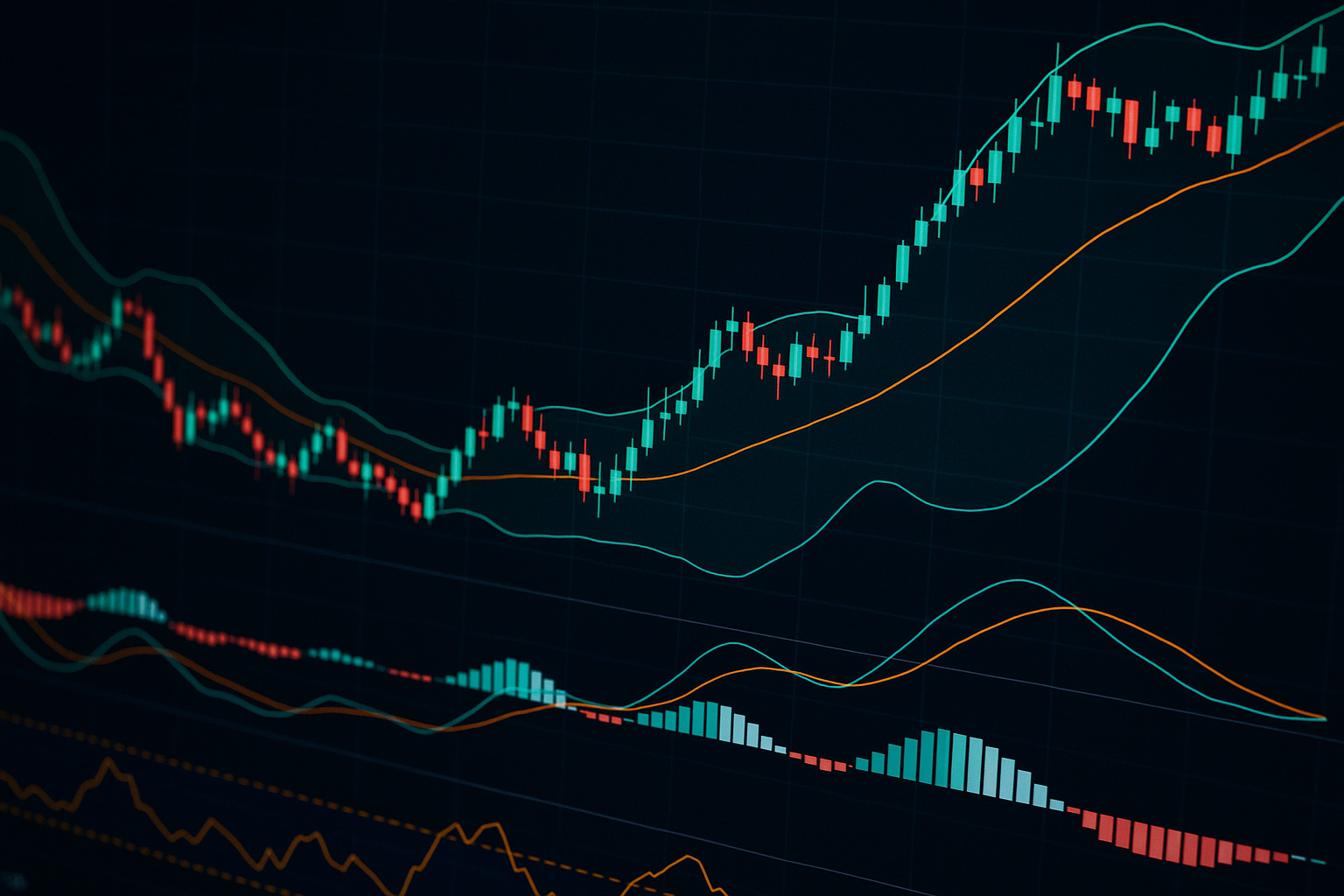
SCC trading attracts traders who want to combine blockchain efficiency with proven market analysis tools. Technical indicators help traders read price action, spot momentum shifts, and time their entries or exits with higher accuracy. This guide explains how to use key technical indicators for SCC and turn raw data into actionable trading decisions.
Understanding the Role of Technical Indicators in SCC
Technical indicators transform historical price and volume data into visual signals that highlight trends, volatility, and possible reversals. They work best when used as part of a structured trading plan rather than as isolated triggers. SCC markets operate continuously and with high liquidity, so indicators can provide an edge in both short-term and swing trading.
Popular Technical Indicators for SCC
1. Moving Averages (MA)
Moving averages smooth price fluctuations, making it easier to identify overall trends. Short-term MAs like the 10 or 20 period respond quickly to price changes, while long-term MAs like the 50 or 200 period show broader trend direction. A crossover strategy, where a short-term MA crosses above a long-term MA, can signal bullish momentum.
2. Relative Strength Index (RSI)
The RSI measures the speed and magnitude of recent price changes on a scale of 0 to 100. An RSI above 70 can suggest overbought conditions, while below 30 can suggest oversold conditions. In SCC trading, combining RSI with trend confirmation can prevent false reversal signals.
3. Moving Average Convergence Divergence (MACD)
MACD tracks the relationship between two moving averages and plots it as a line along with a signal line. Crossovers between the MACD and the signal line often precede momentum shifts. In highly volatile SCC markets, traders may adjust MACD settings to reduce noise.
4. Bollinger Bands
These consist of a moving average and two standard deviation lines. Bands expand during high volatility and contract during low volatility. Price touching or moving outside the bands can indicate potential reversals or the start of a breakout.
5. Volume Profile
Volume-based indicators reveal where the most trading activity occurs at specific price levels. This helps identify support and resistance zones. In SCC trading, volume spikes during price consolidation often precede major moves.
Combining Indicators for Better Accuracy
Using one indicator in isolation can lead to misleading signals. Combining two or more indicators can improve decision quality. For example:
- Use RSI to identify overbought or oversold levels and confirm with MACD crossovers.
- Combine moving averages with Bollinger Bands to spot breakouts aligned with the trend.
- Pair volume analysis with price action to confirm the strength of a breakout.
The goal is to filter noise and act only when multiple signals align.
Building an SCC Indicator-Based Strategy
Step 1: Define Your Timeframe
Decide if you are scalping, day trading, or swing trading. This determines which indicator settings are best suited. Shorter timeframes require faster-reacting indicators while longer ones rely on slower, trend-confirming tools.
Step 2: Select Core Indicators
Choose a mix of trend, momentum, and volatility indicators. For example, a 20-period EMA for trend, RSI for momentum, and Bollinger Bands for volatility.
Step 3: Set Entry and Exit Rules
Write clear rules for entering trades when conditions are met. For instance, buy when price is above the EMA, RSI is below 70, and MACD confirms bullish momentum. Exit rules should protect capital, such as selling when RSI crosses above 80 or MACD shows a bearish crossover.
Step 4: Manage Risk
Always use stop-loss orders to limit downside risk. Position sizing based on percentage of capital per trade helps maintain account stability.
Step 5: Backtest and Adjust
Before using the strategy with real capital, run backtests using historical SCC data. Adjust indicator settings to optimize performance without overfitting to past data.
Common Mistakes When Using Indicators in SCC Trading
- Relying solely on one indicator for all decisions.
- Ignoring market context such as news events that can cause abrupt price changes.
- Using default settings without testing them for SCC’s volatility profile.
- Overtrading due to reacting to every minor signal instead of waiting for strong setups.
Advanced Tips for SCC Indicator Application
- Adjust indicator parameters based on market phase. In trending phases, longer MAs and wider Bollinger Bands reduce false signals. In ranging markets, shorter MAs and tighter bands work better.
- Monitor multiple SCC trading pairs to spot correlated moves. Indicators on correlated assets can confirm or contradict your analysis.
- Integrate candlestick patterns with indicator signals for extra confirmation.
The Value of Discipline in Indicator-Based Trading
Indicators provide structure and remove emotional bias from decision-making. They should be part of a rules-based approach where every trade is executed only when specific conditions align. This consistency increases the likelihood of long-term profitability in SCC trading.




